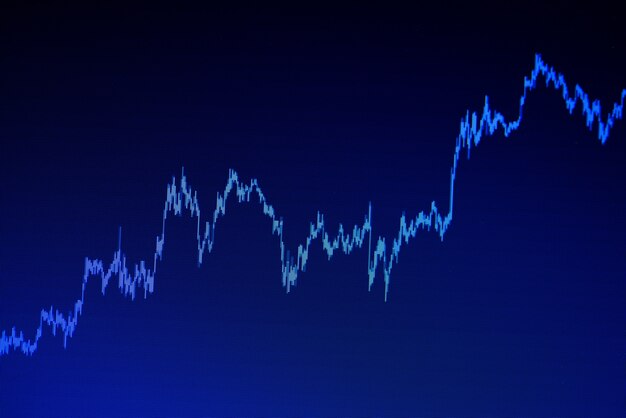Maximizing Your Trading Profit: Strategies to Trade Successfully and Increase Profits
In today’s ever-changing financial landscape, there is a constant quest to uncover the secrets of maximizing one’s earnings. For those with an appetite for risk and a desire to excel in the world of trading, understanding the dynamics of successful investment strategies becomes paramount. It is through these strategies that individuals can unlock the potential of profit, harnessing the power of the market to their advantage.
Unveiling the art of fruitful trading
Effective trading strategies have long been regarded as the holy grail for investors seeking substantial returns. But what sets these strategies apart from the rest? It lies in the art of identifying opportunities, managing risks, and making informed decisions. With a plethora of investment options available, investors must adopt a systematic approach, combining both technical and fundamental analysis to create a winning formula.
Mastering the art of market timing
One vital component of successful trading strategies is the ability to time the market effectively. The difference between buying at the right moment and missing the boat can often determine the fate of an investment. Traders who possess the skills of reading charts, understanding trends, and utilizing technical indicators have an edge in seizing profitable opportunities and avoiding unfavorable market conditions.
Diversification: the key to sustained success
It is often said that one should never put all their eggs in one basket. This principle holds true in the world of trading as well. Building a well-diversified portfolio is essential for mitigating risk and ensuring long-term success. By spreading investments across different asset classes, sectors, and geographical regions, traders can safeguard their capital against unforeseen market volatility, maximizing the potential for consistent and sustainable profits.
As traders navigate the intricacies of financial markets, it is imperative to arm themselves with effective strategies that go beyond mere luck or chance. By delving into the world of successful trading strategies, individuals can gain a competitive edge, unravel the complexities of the market, and ultimately unlock the unlimited potential of profit.
Understand the Basics of Trading for Maximum Trader Profit
Mastering the fundamental principles of trading is essential for maximizing your earnings and achieving success in the financial markets. In this section, we will delve into the core concepts and strategies that form the foundation of profitable trading. By comprehending these fundamentals, you will gain the knowledge and skills necessary to make informed decisions and capitalize on the market opportunities.
1. Know the Market
- To achieve maximum profit in trading, it is crucial to have a deep understanding of the market you are participating in. This involves familiarizing yourself with the various financial instruments available, such as stocks, bonds, commodities, and currencies. Educate yourself about the market structure, trends, and factors influencing price movements.
- Gaining insights into market dynamics, supply and demand, and the overall economic landscape will empower you to identify potential opportunities and effectively manage your positions.
- Stay updated on current events, economic indicators, and industry news that can impact the markets. Regularly analyzing market data and trend patterns will enable you to make informed trading decisions.
2. Develop a Sound Trading Strategy
- A well-defined and tested trading strategy is crucial for achieving maximum profit. Determine your trading style, whether it is day trading, swing trading, or long-term investing, and tailor your strategy accordingly.
- Consider factors such as risk tolerance, time availability, and financial goals when developing your trading plan. Define your entry and exit points, risk management techniques, and profit targets.
- Utilize technical and fundamental analysis to monitor market trends and identify potential entry and exit points. Implementing disciplined trading practices and sticking to your strategy will help you avoid emotional decision-making and maintain consistency in your trading approach.
By grasping the fundamentals of trading and implementing effective strategies, you will be well-positioned to maximize your profit potential in the dynamic and ever-changing world of financial markets.
Implement Effective Risk Management Techniques in Your Trading Strategy
Enhance the profitability of your trading endeavors by incorporating efficient risk management techniques into your overall strategy. By prioritizing the mitigation of potential losses, you can secure more consistent and sustainable gains in the volatile world of trading.
One vital aspect of effective risk management is diversification. By spreading your investments across different financial instruments, markets, and asset classes, you can minimize the impact of any single investment’s performance on your overall portfolio. This approach safeguards against significant losses and allows for potential opportunities to still generate profits.
Another crucial element in managing risk is the establishment of clear stop-loss orders. Identifying predetermined price levels at which you are willing to exit a trade can prevent emotions from guiding your decisions during times of market uncertainty. By adhering to these stop-loss levels, you can limit potential losses and maintain discipline in your trading strategy.
In addition, closely monitoring and analyzing market trends and indicators can greatly aid in effectively managing risk. Stay well-informed about market conditions, economic events, and other factors that can impact the performance of your investments. By conducting thorough research and utilizing technical analysis tools, you can make informed trading decisions and adjust your strategy accordingly.
Implementing appropriate risk management techniques also involves assessing and understanding your risk appetite. Determine the level of risk you are comfortable with and set realistic profit targets based on this assessment. By considering your risk tolerance, you can align your trading strategy with your financial goals and ensure a more balanced approach to trading.
| Risk Management Techniques: | Benefits: |
|---|---|
| Diversification | Minimizes the impact of any single investment’s performance on the overall portfolio. |
| Stop-Loss Orders | Prevents emotional decision-making and limits potential losses. |
| Market Analysis | Allows for informed trading decisions based on market trends and indicators. |
| Risk Appetite Assessment | Aligns trading strategy with financial goals and maintains a balanced approach to trading. |
By incorporating these effective risk management techniques into your trading strategy, you can navigate the unpredictable nature of financial markets with more confidence and ensure long-term success.
Identify and Analyze Profitable Market Opportunities
In this section, we will explore techniques for recognizing and assessing lucrative chances within the market. By identifying these opportunities, traders can position themselves strategically to maximize their financial gains. Through careful analysis and observation, one can uncover potential areas for profitable investments that may otherwise be overlooked.
Recognizing Potential
One crucial aspect of identifying profitable market opportunities is recognizing potential. It involves staying updated with market trends, observing patterns, and being aware of emerging sectors. By studying the market dynamics, traders can identify areas that exhibit strong growth potential, resulting in higher chances of profitability. Recognizing potential is a critical step towards successful trading.
Analyzing Market Dynamics
Once potential opportunities are identified, it is essential to analyze the market dynamics. This involves examining factors such as supply and demand, competition, consumer behavior, and economic indicators that may impact the profitability of a particular investment. By thoroughly analyzing market dynamics, traders can make informed decisions and develop effective strategies to take advantage of profitable market opportunities.
Use Technical Analysis to Enhance Your Trading Performance
Technical analysis serves as a valuable tool for traders aiming to boost their performance in the financial markets. By analyzing historical price and volume data, traders can gain insights into market trends and patterns that can guide their trading decisions. This section will delve into the various techniques and indicators used in technical analysis to help traders make more informed and profitable trades.
One widely used technique in technical analysis is trend analysis. Traders employ trend lines and moving averages to identify and confirm price trends, whether upward, downward, or sideways. By recognizing the prevailing trend, traders can align their trades with the market direction, increasing their chances of success.
- Support and resistance levels also play a crucial role in technical analysis. These levels represent areas where the price has historically had difficulties breaking through. Traders often use these levels to spot potential entry and exit points and to assess the risk-reward ratio of a trade.
- Chart patterns are another valuable tool in technical analysis. These patterns, such as triangles, head and shoulders, and double tops or bottoms, can provide traders with important signals regarding trend reversals or continuations. Being able to identify these patterns can give traders an edge in their decision-making process.
- Technical indicators, such as moving averages, Relative Strength Index (RSI), and MACD (Moving Average Convergence Divergence), are mathematical calculations applied to price and volume data. These indicators help traders identify overbought or oversold conditions, confirm trends, and generate buy or sell signals.
It is important to note that technical analysis should not be used in isolation but as part of a comprehensive trading strategy. Traders should combine technical analysis with fundamental analysis and risk management techniques to optimize their trading performance. By gaining a deeper understanding of technical analysis and honing their skills in its application, traders can potentially increase their profitability and achieve greater success in the markets.
Develop a Winning Mindset for Profitable Trading
When it comes to achieving success in the world of trading, one of the most crucial factors is having a winning mindset. In this section, we will explore the importance of developing the right mindset for profitable trading and discuss key strategies to help you achieve your trading goals.
1. Set Clear Goals: Defining your trading goals is essential for developing a winning mindset. Having clear objectives gives you something to strive for and helps you stay focused and motivated. Whether you aim to generate consistent profits, grow your investment portfolio, or minimize risks, setting realistic and achievable goals will provide you with a roadmap for success.
- Identify your financial targets
- Outline your short-term and long-term objectives
- Establish benchmarks for measuring progress
2. Maintain Discipline: Discipline is a critical attribute for successful traders. It involves sticking to your trading plan, following a set of predefined rules, and avoiding impulsive decisions driven by emotions. Having the discipline to stay consistent in your trading activities will help you avoid unnecessary risks and increase your chances of achieving consistent profits.
- Adhere to your risk management strategies
- Stick to your entry and exit rules
- Control your emotions and avoid impulsive trading
3. Continual Learning: The trading landscape is constantly evolving, making it essential for traders to embrace continuous learning. Educating yourself about the financial markets, analyzing trading data, and staying updated with industry news and trends will equip you with the knowledge and skills required to make informed trading decisions. Continual learning will help you adapt to market changes and identify profitable trading opportunities.
- Read books and articles on trading strategies
- Take courses or attend workshops
- Analyze charts and financial reports
4. Manage Risk: Successful traders understand the importance of risk management. Implementing risk management strategies helps protect your capital and minimize potential losses. By using techniques such as setting stop-loss orders, diversifying your portfolio, and managing position sizes, you can effectively control risks and maximize your chances of profitability.
- Use stop-loss orders to limit potential losses
- Diversify your trading portfolio across different assets
- Manage your position sizes based on risk-reward ratios
5. Stay Disciplined in Adversity: Trading is not always smooth sailing, and facing losses or setbacks is a common part of the journey. However, maintaining discipline and composure during challenging times is crucial for long-term success. By staying resilient and learning from your mistakes, you can bounce back stronger and adapt your trading strategies to overcome obstacles.
- Review and analyze your trading performance objectively
- Learn from your mistakes and adjust your strategies accordingly
- Surround yourself with a supportive trading community
Developing a winning mindset is a continuous process that requires dedication, self-reflection, and a commitment to personal growth. By implementing these strategies and adopting the right mindset, you will be on your way to achieving profitable trading results.
Utilize Advanced Trading Tools and Technology for Enhanced Profitability
Explore the potential of cutting-edge trading tools and technology to boost your profitability in the dynamic world of trading. By harnessing the power of innovative tools and advanced technology, you can effectively navigate the complexities of the market and optimize your financial gains.
Uncover a vast array of sophisticated tools and state-of-the-art technology that can provide you with a competitive edge in the trading sector. These tools and tech solutions offer insightful data analysis, real-time market updates, and efficient trade execution, all aimed at maximizing your returns and ensuring long-term success.
Embrace the opportunities provided by automated trading systems, algorithmic trading software, and high-frequency trading platforms. These advanced tools leverage complex algorithms and machine learning techniques to analyze vast amounts of data, identify patterns, and execute trades at lightning speed, enabling you to seize profitable opportunities swiftly.
Discover the benefits of using robust analytical tools and financial models to enhance your decision-making process. By utilizing technical indicators, charts, and graphs, you can gain valuable insights into market trends, price movements, and potential trading opportunities. This data-driven approach empowers you to make informed decisions and capitalize on evolving market conditions.
Stay ahead of the curve by leveraging the power of mobile trading applications and cloud-based platforms. With the flexibility and convenience offered by these tools, you can monitor the markets, execute trades, and manage your portfolio on-the-go. Real-time access to market data and the ability to react promptly to changing market dynamics are critical components of a successful trading strategy.
Employ cutting-edge risk management tools and trading software to protect your investments and optimize your profit potential. Take advantage of stop-loss orders, limit orders, and risk assessment tools to minimize losses and maximize gains. These risk management tools, coupled with advanced trading technology, provide a comprehensive framework for maximizing profitability while minimizing risks.
By embracing advanced trading tools and technology, you can transform your trading approach and elevate your profitability to new heights. Stay at the forefront of innovation and leverage these tools to gain a competitive advantage in the market, ultimately yielding enhanced financial returns and ensuring the success of your trading endeavors.
Questions and answers: Profit by trading
What are some successful trading strategies to maximize profit?
There are several successful trading strategies that can help maximize profit. One strategy is trend following, where traders analyze market trends and make trades in the direction of those trends. Another strategy is breakout trading, where traders look for price movements that break through support or resistance levels. Additionally, some traders use a momentum strategy, where they focus on stocks or assets that are experiencing significant upward or downward price movements. These are just a few examples of successful trading strategies, and it’s important for each trader to find the strategy that works best for them.
How important is risk management when it comes to trading?
Risk management is crucial when it comes to trading. It involves assessing and mitigating potential risks associated with trades. By implementing risk management strategies, traders can protect their capital and minimize losses. This may involve setting stop-loss orders, diversifying their portfolio, and using proper position sizing. Without effective risk management, traders expose themselves to the possibility of significant financial losses. Therefore, it is essential for traders to prioritize risk management to maximize their long-term profitability.
What role does emotional control play in successful trading?
Emotional control plays a critical role in successful trading. The ability to make rational, unemotional decisions is key to long-term profitability. Emotional trading, driven by fear or greed, often leads to poor decision-making and impulsive trades. Successful traders understand the importance of maintaining discipline and sticking to their trading strategies, regardless of market fluctuations. They develop techniques to control their emotions, such as taking breaks, practicing mindfulness, and following a detailed trading plan. By keeping their emotions in check, traders can make more objective decisions and increase their chances of maximizing profit.
Is it necessary to stay updated with market news and analysis to be a successful trader?
Staying updated with market news and analysis is highly recommended for traders aiming for success. Understanding the current market trends, economic indicators, and geopolitical events can provide valuable insights into future price movements. By staying informed, traders can spot potential opportunities and adjust their strategies accordingly. However, it’s important to remember that market news and analysis should be used as a tool and not the sole basis for decision-making. Ultimately, successful trading requires a combination of analysis, strategy, and experience.
What is the trading profit, and how does it differ from other forms of profit?
Trading profit refers to the profit earned from buying and selling financial instruments like stocks, forex, or commodities within a trading account. It differs from other forms of profit, such as operating profit or net profit, which may be derived from different business activities.
What is a day trader, and how do they aim to make a profit?
A day trader is an individual who buys and sells financial assets within the same trading day, aiming to capitalize on short-term price movements and generate profits from intraday trading activities.
What role does a broker play in trading, and how does it impact a trader’s ability to make a profit?
A broker facilitates trading activities by executing buy and sell orders on behalf of traders. The quality of the broker’s services, including execution speed, fees, and reliability, can significantly impact a trader’s ability to make a profit.
How do traders use stop-loss and take-profit orders to manage risk and lock in profits?
Traders use stop-loss orders to limit potential losses by automatically selling a position if the price moves against them, while take-profit orders allow traders to lock in profits by automatically selling a position once a predetermined profit target is reached.
What are some common pitfalls that traders may encounter when trying to make a profit?
Traders may lose money due to factors such as overtrading, emotional decision-making, lack of risk management, insufficient market knowledge, or failure to adapt to changing market conditions.
How do day traders make a profit, and what strategies do they employ to achieve success?
Day traders make a profit by capitalizing on short-term price movements in the market. They employ various strategies such as scalping, momentum trading, or technical analysis to identify profitable trading opportunities within a single trading day.
What is the significance of money management in trading, and how does it impact a trader’s profitability?
Money management involves managing risk and capital allocation to preserve trading capital and maximize profitability. Effective money management strategies can help traders mitigate losses and optimize their trading performance.
How does trading profit differ from operating profit and net profit in the context of trading?
Trading profit specifically refers to the profit earned from buying and selling financial assets within a trading account. Operating profit and net profit, on the other hand, are broader financial metrics used to evaluate the profitability of a business entity.
What factors should traders consider before entering a trade to maximize their chances of making a profit?
Traders should consider factors such as market conditions, price action, technical indicators, news events, risk-reward ratio, and money management principles before entering a trade to increase their probability of success.
Why is it important for traders to understand the risks associated with trading and the potential impact on their profits?
Understanding the risks associated with trading, including market volatility, leverage, and liquidity risks, is crucial for traders to make informed decisions and protect their capital. Failure to manage risks effectively can lead to substantial losses and erode trading profits.
What is the trading profit definition, and how is it calculated in the context of financial markets?
The trading profit definition refers to the financial gain earned from buying and selling assets within a trading account. It is calculated by subtracting the total cost of purchasing assets from the total revenue generated from selling those assets.
How can individuals start trading in financial markets, and what steps should they take to begin?
Individuals can start trading in financial markets by opening a trading account with a brokerage firm, conducting research on different markets and assets, developing a trading strategy, and practicing with a demo account before trading with real money.
What is a take profit order, and how does it help traders manage their positions in the market?
A take profit order is a predefined instruction set by a trader to automatically sell a position once it reaches a specified price level. It allows traders to lock in profits and avoid missing out on potential gains.
What factors influence trading decisions when trading today, and how do traders navigate market volatility?
Trading decisions made today are influenced by factors such as market news, economic indicators, technical analysis, and investor sentiment. Traders navigate market volatility by implementing risk management strategies, such as setting stop-loss orders and diversifying their portfolios.
How does a stop-loss order work, and why is it essential for risk management in trading?
A stop-loss order is a preset order placed by a trader to automatically sell a position if the price moves against them beyond a specified threshold. It helps traders limit potential losses and protect their trading capital.
What role do trading firms play in financial markets, and how do they differ from individual traders?
Trading firms are entities that engage in buying and selling financial assets on behalf of their clients or proprietary trading activities. They often have access to advanced technology, research, and resources compared to individual traders.
What is profit-taking, and why do traders engage in this practice during trading sessions?
Profit-taking refers to the act of selling a position to realize profits earned from favorable price movements. Traders engage in profit-taking to lock in gains and manage their trading accounts’ overall profitability.
How does the market price of an asset impact trading decisions, and what factors influence market price movements?
The market price of an asset influences trading decisions by determining its current value and potential profitability. Market price movements are influenced by factors such as supply and demand dynamics, economic data, geopolitical events, and investor sentiment.
Why is it important for traders to understand how trading works before entering the financial markets?
It’s important for traders to understand how trading works to make informed decisions, manage risks effectively, and avoid costly mistakes. Understanding trading mechanics, market dynamics, and risk management principles is crucial for success in trading.
What should beginner traders know before starting their trading journey, and where can they find resources for guidance?
Beginner traders should familiarize themselves with basic trading concepts, risk management principles, and trading strategies before starting their trading journey. They can find resources for guidance from reputable educational websites, books, online courses, and mentorship programs.








No responses yet